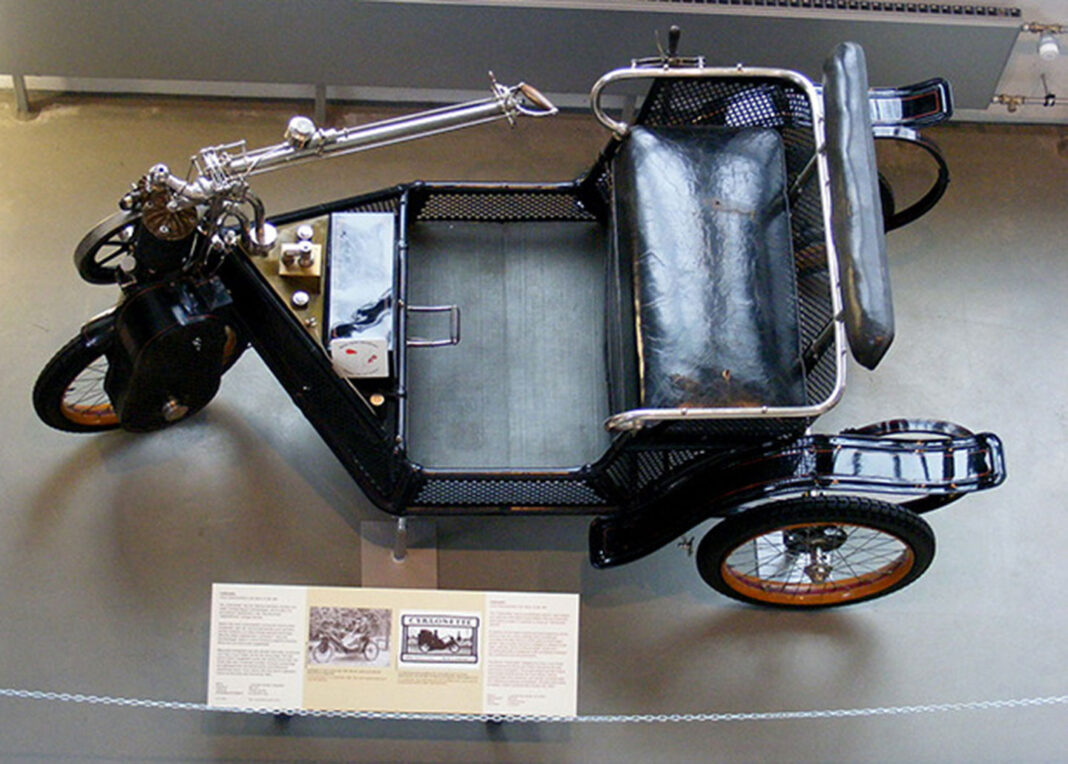At the beginning of the 19th century, when the idea of new cars was just budding in the minds of inventors, the only mechanical means of transportation that had the ability to change direction was the boat. Trains, on the other hand, could only move in a fixed path. At that time, steering a horse-drawn carriage merely involved pulling the reins to the left or right, without the need for any mechanical tool.
Therefore, the only source of inspiration for car inventors with regards to steering was boats. Ships were able to change direction using their rudders, which were controlled by humans through a tiller.
Until 1894, the use of tillers to control cars became increasingly inefficient. Taking inspiration from the maritime industry, car manufacturers began replacing tillers with circular-shaped steering wheels, similar to the ones found on boats but smaller in size. And thus, the car steering wheel was born.
Designed to be smaller and simpler than its prototype on ships, the car steering wheel made its mark in the Paris – Rouen race when racer Alfred Vacheron steered his Panhard model car using a steering wheel to cross the finish line.
The ease and convenience of the steering wheel’s operation demonstrated in this race brought about advancements in steering wheel application. In 1898, the Panhard et Levassor car model was introduced with the steering wheel as one of its standard features.
The principle of operation of the steering wheel system quickly spread to car manufacturers worldwide. In England, Charles Stewart Rolls purchased a Panhard car from France and integrated the steering wheel into his car designs.
By 1899, the “steering wheel fever” had spread across the United States. Packard introduced steering wheels in some of their car models. By the time the famous Ford Model T was introduced, the steering wheel had become one of the essential components of a car.
Since then, the steering wheel has maintained its most common circular shape for over a century. The only changes have been in its features. Steering wheels of the 21st century have become the central control of the car.
After the invention of the steering wheel, inventors made efforts to develop power steering systems to improve steering control. Like in other fields, power steering system development was driven by the needs of warfare. By the end of World War II, there were over 10,000 vehicles equipped with power steering systems on the frontlines.
In 1956, every 4 cars had 1 car with power steering. By the end of the following decade, 3.5 million power steering systems were sold. For many decades, besides steering control, the steering wheel also had a horn button.
By the 1960s, car manufacturers began placing automatic transmission controls on the steering wheel. In the early 1990s, the development of intricate steering wheel parts truly began.
From its inception until now, the steering wheel has been associated with cars and has maintained its unchanged circular shape for over a century. However, in this 21st century, the steering wheel is not just a steering control but also the central control of the entire car.
References:
– “Gương chiếu hậu – Câu chuyện của những năm 1900” [Rearview mirror – The story of the 1900s]. Trithucthoidai. https://trithucthoidai.com/guong-chieu-hau-cau-chuyen-cua-nhung-nam-1900-100373.
– “Ai đã nghĩ ra cần gạt nước trên ôtô?” [Who came up with windshield wipers for cars?]. Trithucthoidai. https://trithucthoidai.com/ai-da-nghi-ra-can-gat-nuoc-tren-oto-100372.









































